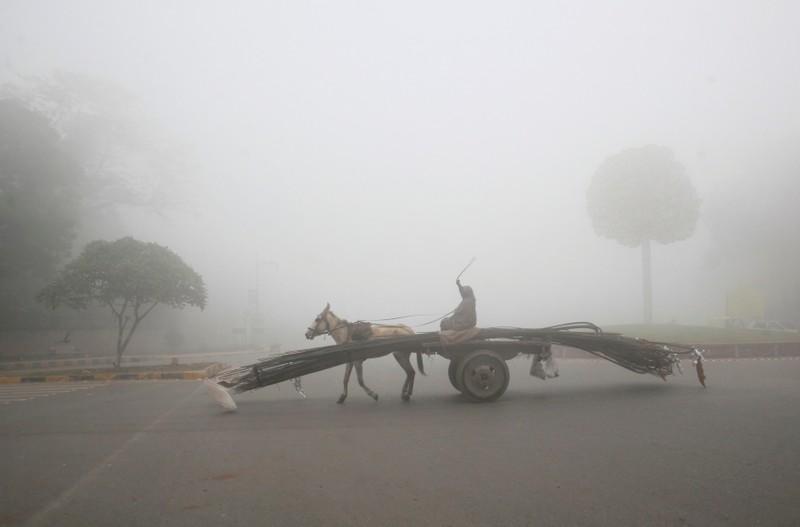
While the sight of an aged cart vendor selling fruit, vegetables or children’s toys under the blistering hot summer sun in Ramazan might elicit a sympathetic squint from even the comparatively stony commuters, rarely anyone notices the torment of the bridled donkey positioned lifelessly ahead of the cart, whose infirm, battered and bruised body is shaken back into work mode with every barbaric whip from the vendor.
Consider for instance, the life of the donkeys and mules working for 42 year old Muhammad Ramzan, who has been transporting soil, bricks, sand, gravel and cattle straw on donkey carts since the past 24 years.
“My family used to own around 40 donkeys and mules, but now we have only four mules and 12 donkeys left since the rest of the animals died at various times due to disease and weakness. Only one veterinary hospital is available in my area but there is often no doctor on duty since they prefer to treat animals at big farms and neglect the suffering of working animals,” shared Ramzan, who used traditional remedies to treat his animals, which clearly had a high rate of failure.
According to Naeem Abbas, Advocacy Manager of Brooke, an international organisation working on the health of working donkeys and horses in Pakistan, every second household in Lahore, Gujrat, Sheikhupura and Gujranwala, had at least one donkey, horse or mule for bringing fodder to livestock, disposing of garbage and dung, and transporting goods yet disproportionately few veterinary facilities were available for their check-ups and treatment.
“Only one veterinary doctor is available to take care of 20,000 to 25,000 animals in Punjab at present. Hence, many working animals who suffer from injuries, weakness or a loss of vision embrace premature death,” revealed Abbas, who further claimed that approximately 8,000 donkeys and mules were working in coal mines, while 200,000 donkeys, horses and mules were working across brick kilns in Chakwal and Khushab.
Read also: ‘Animal rights pivotal to society’
According to a report obtained by the Express Tribune from the Economic Survey of Pakistan from 2023, the number of working animals in the country is currently 6.4 million including 0.4 million horses, 5.8 million donkeys and 0.2 million mules. Moreover, 35 to 40 per cent of 8 million people living in rural areas are dependent on livestock and working animals for their sustenance.
“We still do not have a common forum for the identification of new diseases and epidemics in animals. There is an urgent need to adopt a One Health Policy so that research can also be done on diseases that are transmitted between humans and animals and measures can be taken to prevent them,” said Dr. Masood Rabbani, Honorary Secretary of the Animal Anti-Cruelty Department and President of the Pakistan Veterinary Medical Council.
It is worth mentioning that despite the World Health Organization (WHO) declaring that 70 per cent of new diseases emerging worldwide are being transmitted from animals to humans, no national animal health policy could be formed in Pakistan due to which all provinces are working independently on the health and welfare of their animals.
Speaking to the Express Tribune on the matter, Animal Husbandry Commissioner Dr Muhammad Akram said, “All stakeholders have been consulted on the Pakistan Animal Health, Welfare and Veterinary Public Health Bill. It is hoped that the elected government will soon approve it, after which the first National Animal Health Policy will be implemented in Pakistan.”



1729662874-0/One-Direction-(1)1729662874-0-165x106.webp)


1726722687-0/Express-Tribune-Web-(9)1726722687-0-270x192.webp)


1732011525-0/Express-Tribune-(8)1732011525-0-270x192.webp)












COMMENTS
Comments are moderated and generally will be posted if they are on-topic and not abusive.
For more information, please see our Comments FAQ